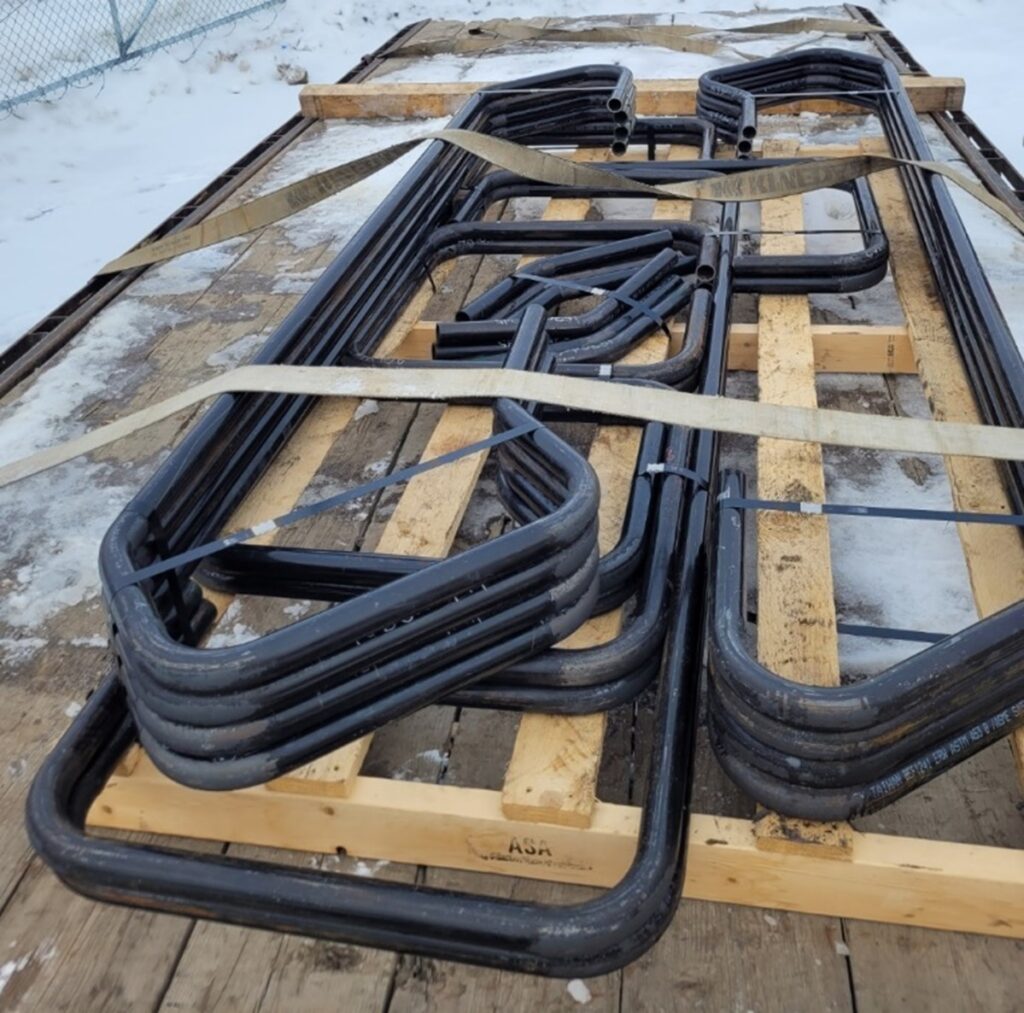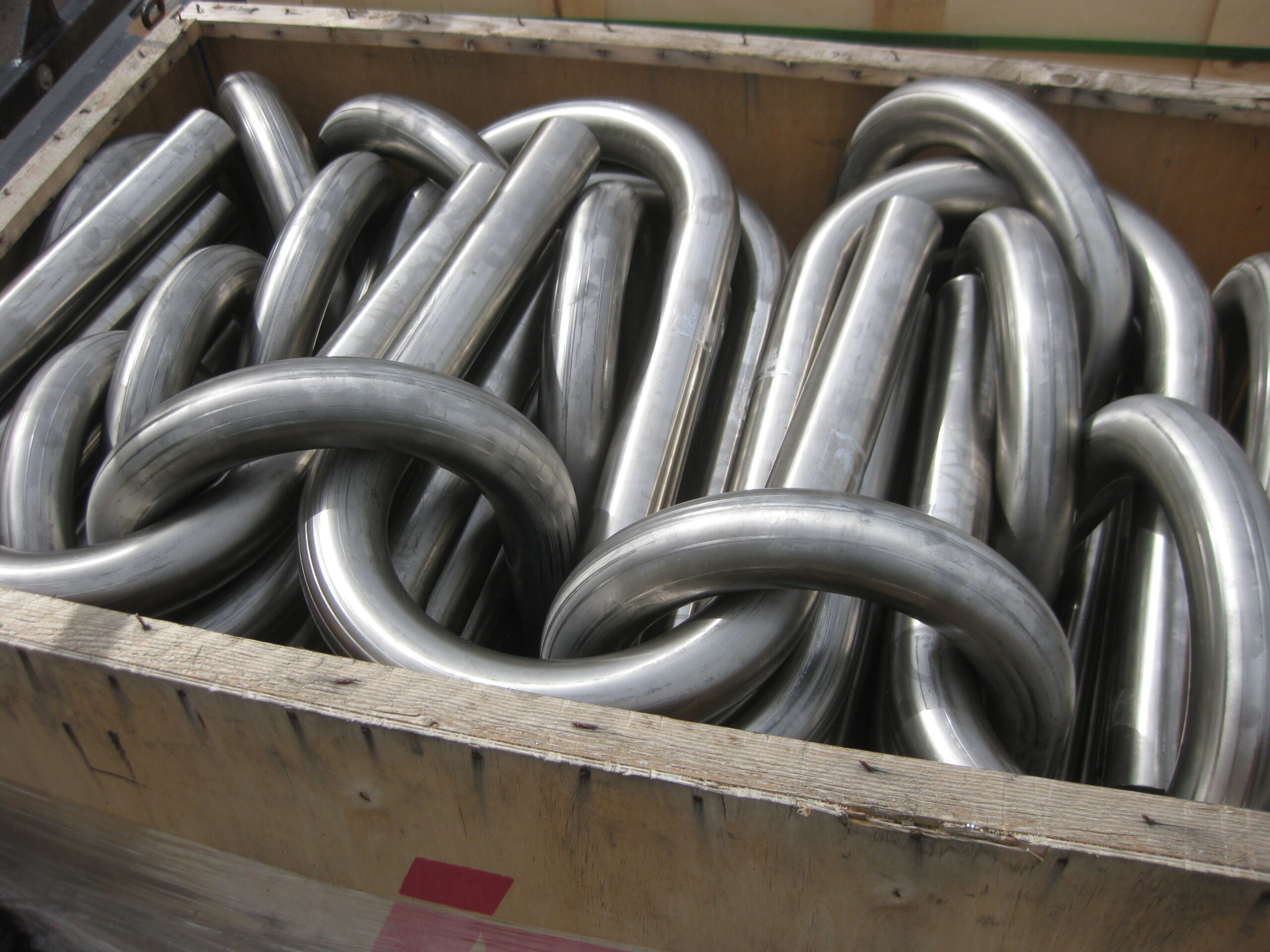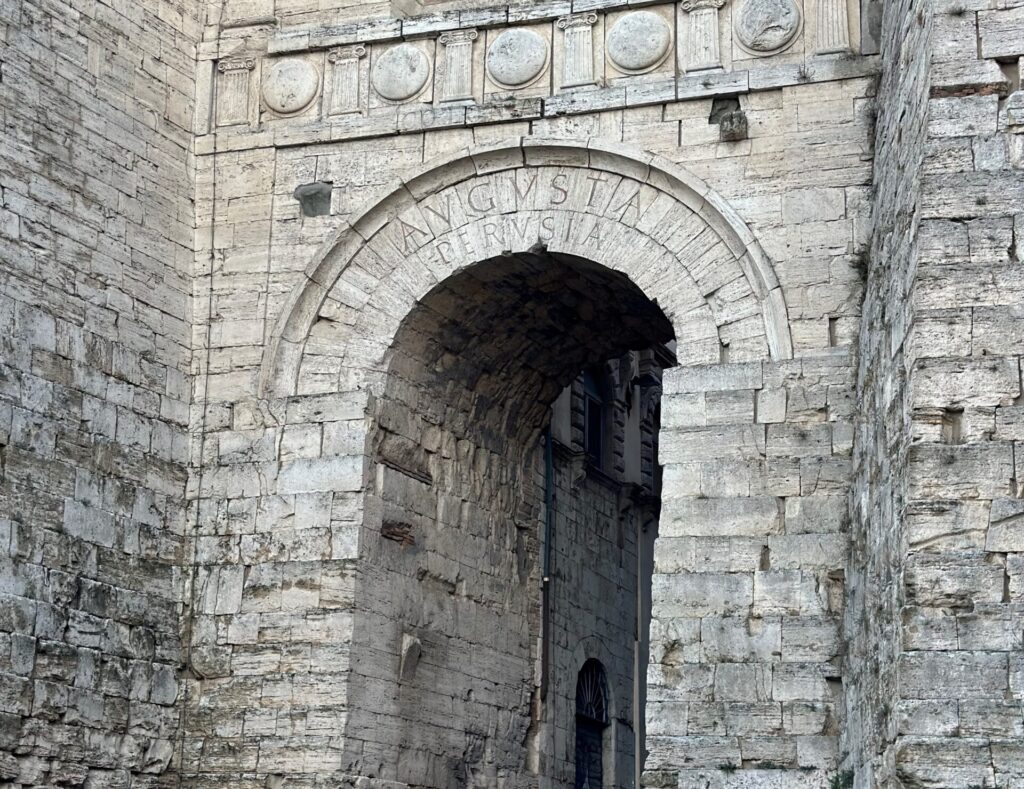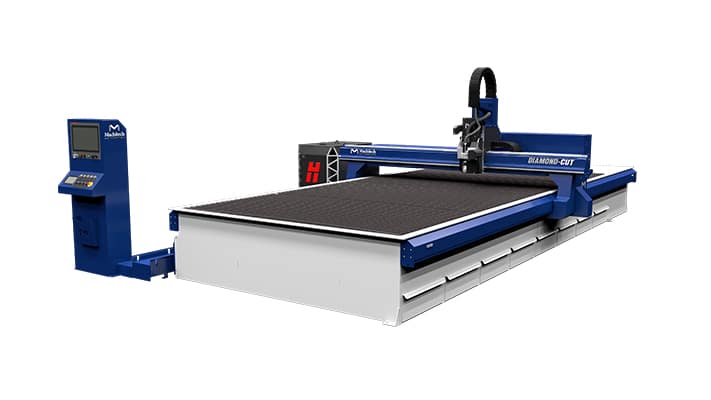CNC Bending vs Weld Elbows
Anytime that accurate bends can be utilized instead of weld elbows, quality improves, and labor efficiencies are gained.
Labor is one of the largest costs in the construction of railings for catwalks, stairs, mezzanine barriers, etc. Atlas Industries provides CNC bending benefiting our customers in four ways:
- Lower project costs,
- Shortened lead time,
- Increased accuracy,
- Saved labor hours to be applied to other profitable work.

These long railing segments were CNC formed saving the fit up, welding, and cleanup of 6 elbows (12 weld joints) per part. This load of railing parts has 85 bends. Traditional all-welded construction would add approximately 85 labor hours to complete this job.
Factors to consider when planning to incorporate bends instead of weld elbows:
Weld elbows have a centerline radius that’s described in relation to the nominal pipe size. A typical centerline radius will be 1.5D, or 1.5 times the pipe size. For instance, a 1.5D elbow for 1.25” pipe will have a centerline radius of 1.875”.
CNC bends are done most economically with a centerline radius of 2-4 times the nominal pipe, or structural size.
Benders have limitations on how small bend radii can be made. Compression benders commonly generate 5D. Rotary draw benders commonly make bends with radii of 2-4D and tighter depending on material dynamics, and the addition of more tooling elements. Adding CNC control to the rotary draw bending process results in economy, accuracy, and easy repeatability, potentially removing hundreds of labor hours from large railing jobs.

The 1.25” pipes shown in this picture have 2.3D bends meaning their centerline radius is 2.875”.
CNC bending for this project could reduce up to 40hrs of labor.
HSS Railings: Quantity of 300 – 3.5D bends for various styles of frames out of 2”x 2” x .1875” Mild Steel HSS were bent with 7” centerline radius.
Bending vs weld elbows eliminated the fitting/welding/polishing of over 600 joints.


D-rings for belt reels: CNC bending incorporated with rolling operations generated accurate parts with multiple forms

Trailer Rails: Aluminum pipe bends with coped ends.
Our tooling inventory includes dies for pipes, round, and square structural tubes.
Other factors to consider when determining if bends are possible, and suitable are:
- Material type and wall thickness.
- Percentage of elongation (25% or greater is desirable) – This is a material ductility factor taken from the mechanical properties.
- Distance between bends.
- Lengths of material required/available.
If you have any questions regarding suitability or capability, please contact us. We’d be pleased to engage your projects to see if CNC bending is the right choice.
Written by,
Warren Peters – President of Atlas Industries Ltd.




